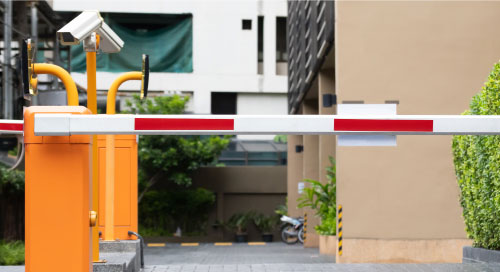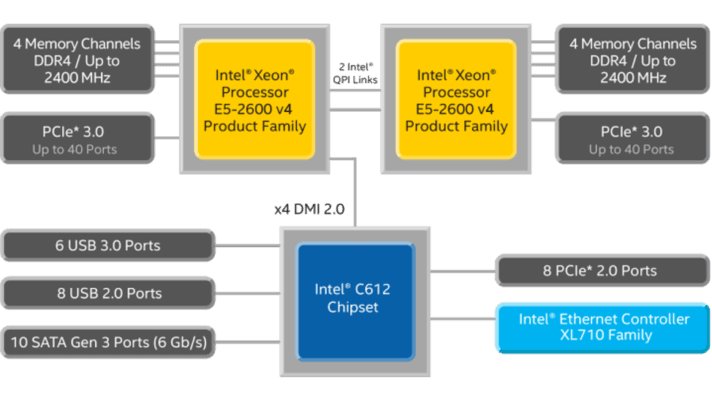Computer Vision and AI Automate DSS for the Smart City

Digital security and surveillance (DSS) systems are everywhere around us.
But despite their ubiquity in both public and private spaces, typical DSS systems are often just pipes that pass video feeds from IP cameras over a network and to a network video recorder (NVR) or video management system (VMS). But with rapid advances in computer vision technology, these systems could be capable of much, much more.
Computer vision-enabled DSS systems are coming to market that trigger automated actions in a number of smart city applications. These solutions are being delivered as software modules that integrate with existing VMS infrastructure to reduce costs while increasing intelligence.
One example is automated access control at a condominium complex in Brazil. The goal was to improve the safety and security of its residents. The site owner elected to upgrade its existing DSS surveillance infrastructure with facial and license-plate recognition technology.
Through a collaboration with AI algorithm developer RealNetworks, DigiFort, a leading VMS solutions provider, has integrated use-case-specific AI modules into offerings that include the recognition technology required by the condominium surroundings. The VMS solutions can be hosted in the cloud or on premises-based servers that enable real-time response rates for automated actions like physical access control.
In the use case at hand, cameras installed on or near a mechanical gate run facial recognition against the driver. That information is combined with algorithms run against the vehicle’s license plate to grant or revoke access to the secure parking area. If both records match information in an existing database, the gate will open.
“This action happens in a matter of milliseconds,” said Roberto Graciosi Filho, Technical Manager at Digifort. “Once the vehicle is seen by the camera, we start running our algorithm. It identifies the plate and we send a signal to open the gate, all in less than one second.”
In another real-world example, Digifort enables facial recognition on a beach in the municipality of Praia Grande, Brazil. In that setup, 50 cameras are connected to one server.
“Using a GPU, we can process 10 to 15 faces simultaneously with 99.86 percent accuracy,” said Graciosi Filho. “We are only using this information for the security of the individuals, so we don’t have any problems with the law or any restrictions.”
“Once the vehicle is seen by the camera, we start running our algorithm. It identifies the plate and we send a signal to open the gate, all in less than one second.” —Roberto Graciosi Filho, Digifort
AI Automates Actions in Real Time
Depending on the application, the process of analyzing vehicle license plates, identifying faces, and triggering automated actions must all occur within seconds or less. This is a big ask of both the solution hardware and software infrastructure, regardless of whether the workloads are executing at the edge or in the cloud.
Digifort’s VMS solutions can deliver the high frame rate, high resolution, and low lux required by computer vision-enabled DSS deployments in a variety of environments. This is possible, in part, thanks to the use of Intel® Xeon® processor-based servers such as the 8-core E5 v4 processor, which can support 3-megapixel camera recordings at 30 frames per second (fps) over 3.5 Gbps data links (Figure 1).

The Intel Xeon processors also help facilitate the high-bandwidth transport of images and video from IP cameras at the edge to back-end servers without any packet loss or image freeze. This, of course, is critical to accurate execution of computer vision algorithms in the VMS solution.
Attention to Detail
At a time when security professionals are proactively working to keep cities, airports, train stations, schools, shops, and workspaces safe, surveillance systems augmented with computer vision technology can relieve them from the burden of long monitoring hours.
Digifort’s Facial Recognition VMS enables security staff to be alerted in real time when persons of interest are recognized on any live camera feed. When integrated on its VMS, RealNetworks’ SAFR technology lets Digifort add intelligence to its video surveillance offerings.
Video synopsis features can apply intelligent analytics on recorded video streams to condense hours of video recording into clips of a few minutes. Additional features like real-time video alarm triggers and assisted video search also help reduce the burden from government and security professionals.
The automation enabled by computer vision brings much-needed concentration and attention to detail to surveillance systems by merging monitoring capabilities with intelligent analytics and automated actions. Here, powerful edge compute plays a central role in managing a variety of AI workloads and network transport, while innovative software integrations take DSS to a whole new level for the smart cities of the future.